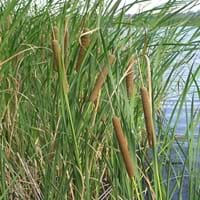Life Span
Perennial
Perennial
Origin
Hybrid origin, Mexico, Central America, South America
North America, United States, Northeastern United States, Mid-Atlantic United States, Southeastern United States, North-Central United States, Central United States, Western United States, California, Canada
Types
Not Available
Not Available
Habitat
Coastal Regions
Bog Garden, Ponds
USDA Hardiness Zone
11-15
3-10
Sunset Zone
A1, A2, A3, H1, H2, 1a, 1b, 2a, 2b, 3a, 3b, 4, 5, 6, 7, 8, 9, 10, 11, 12, 13, 14, 15, 16, 17, 18, 19, 20, 21, 22, 23, 24
21,22
Habit
Upright/Erect
Thicket/Colonizing
Flower Color
Yellow
Light Yellow, Light Green
Flower Color Modifier
Bicolor
Not Available
Leaf Color in Spring
Green, Dark Green
Green
Leaf Color in Summer
Green, Dark Green
Green
Leaf Color in Fall
Green, Dark Green
Green
Leaf Color in Winter
Green, Dark Green
Not Available
Leaf Shape
Ovate
Flat, Narrow
Plant Season
Spring, Summer, Fall
Summer, Fall
Sunlight
Full Sun
Full Sun, Partial Sun
Type of Soil
Loam, Sand
Loam, Sand
The pH of Soil
Neutral
Acidic, Neutral, Alkaline
Soil Drainage
Well drained
Poorly Drained
Bloom Time
Indeterminate
Early Summer, Summer
Tolerances
Drought
Wet Site
Where to Plant?
Container, Ground
Ground
How to Plant?
Grafting, Seedlings
Divison, Seedlings
Plant Maintenance
Medium
Medium
Watering Requirements
Needs more water during establishment
Needs Very high moisture
In Summer
Lots of watering
Lots of watering
In Spring
Moderate
Moderate
In Winter
Average Water
Average Water
Soil pH
Neutral
Acidic, Neutral, Alkaline
Soil Type
Loam, Sand
Loam, Sand
Soil Drainage Capacity
Well drained
Poorly Drained
Sun Exposure
Full Sun
Full Sun, Partial Sun
Pruning
Pinch or prune as they grow to promote branching and bushiness
Remove damaged leaves
Fertilizers
14-14-14 Fertilizer, Compost
Nutrient Rich Fertilizer
Pests and Diseases
Anthracnose, Aphids, Red blotch, Rust
Free of serious pests and diseases
Plant Tolerance
Heat Tolerance, Salt and Soil Compaction
Drought
Flower Petal Number
Single
Not Available
Fragrant Bark/Stem
Yes
No
Foliage Texture
Medium
Coarse
Foliage Sheen
Matte
Glossy
Attracts
Aphids, Not Available, Squirrels
Wildlife
Allergy
Stomach pain, Vomiting
Mild Allergen
Aesthetic Uses
Used in parkland
Cut Flowers, Wild gardens
Beauty Benefits
Anti-ageing, Blackheads, Reduce Bruises
Not Available
Environmental Uses
Shadow Tree, Soil protection
Air purification
Medicinal Uses
Dehydration, Diabetes, Diarrhea, Nutrients, Weight loss
anticoagulant, Diuretic, Haemostatic, Miscellany
Part of Plant Used
Fruits
Flowers, Leaves, Root, Seeds, Stem
Other Uses
Application in Handicrafts, Food for animals, Showy Purposes
Used as a thickener in soups, Used to make biscuits, Used to produce edible oil, Used to yield a sweet syrup
Used As Indoor Plant
No
No
Used As Outdoor Plant
Yes
Yes
Garden Design
Edible, Herb, Vegetable
Dried Flower/Everlasting, Wildflower
Botanical Name
Manilkara zapota
TYPHA angustifolia
Common Name
sapodilla , chikoo, Sapota
Narrowleaf Cattail, Lesser Reedmace
In Hindi
चीकू
Narrowleaf Cattail
In German
Breiapfelbaum
Schmalblättriger Cattail
In French
Sapotillier
Narrowleaf Cattail
In Spanish
chicle
Espadaña de hoja estrecha
In Greek
sapodilla
στενόφυλλα Cattail
In Portuguese
sapodilla
Narrowleaf Tifa
In Polish
Pigwica właściwa, sapodilla
Wąskolistne Cattail
In Latin
sapodilla
Cattail glaucescens
Phylum
Magnoliophyta
Magnoliophyta
Class
Magnoliopsida
Liliopsida
Family
Sapotaceae
Typhaceae
Clade
Angiosperms, Asterids, Eudicots
Angiosperms, Commelinids, Monocots
Tribe
Sapoteae
Not Available
Subfamily
Sapotoideae
Not Available
Number of Species
Not Available
Season and Care of Sapodilla and Narrowleaf Cattail
Season and care of Sapodilla and Narrowleaf Cattail is important to know. While considering everything about Sapodilla and Narrowleaf Cattail Care, growing season is an essential factor. Sapodilla season is Spring, Summer and Fall and Narrowleaf Cattail season is Spring, Summer and Fall. The type of soil for Sapodilla is Loam, Sand and for Narrowleaf Cattail is Loam, Sand while the PH of soil for Sapodilla is Neutral and for Narrowleaf Cattail is Acidic, Neutral, Alkaline.
Sapodilla and Narrowleaf Cattail Physical Information
Sapodilla and Narrowleaf Cattail physical information is very important for comparison. Sapodilla height is 150.00 cm and width 60.00 cm whereas Narrowleaf Cattail height is 120.00 cm and width 240.00 cm. The color specification of Sapodilla and Narrowleaf Cattail are as follows:
Sapodilla flower color: Yellow
Sapodilla leaf color: Green and Dark Green
Narrowleaf Cattail flower color: Light Yellow and Light Green
- Narrowleaf Cattail leaf color: Green
Care of Sapodilla and Narrowleaf Cattail
Care of Sapodilla and Narrowleaf Cattail include pruning, fertilizers, watering etc. Sapodilla pruning is done Pinch or prune as they grow to promote branching and bushiness and Narrowleaf Cattail pruning is done Remove damaged leaves. In summer Sapodilla needs Lots of watering and in winter, it needs Average Water. Whereas, in summer Narrowleaf Cattail needs Lots of watering and in winter, it needs Average Water.





